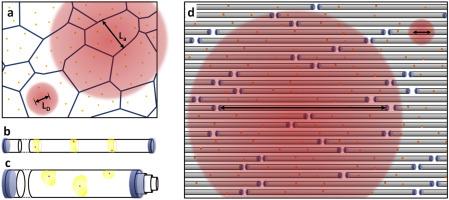
Submitted by James Elliott on Sat, 28/01/2017 - 23:03
A new paper by John S. Bulmer, Thurid S. Gspann, Jon S. Barnard and James A. Elliott is published in Carbon.
Raman spectroscopy's D:G ratio is a well-known indicator of graphitic crystallinity in single-wall carbon nanotubes (SWCNTs) with widespread qualitative application to macroscopic CNT assemblies. Here, we show how the D:G ratio yields quantitative characteristic crystal length features that is remarkably independent of SWCNT chirality when purified SWCNTs are in a high density, heavily bundled textile form. Purified, unaligned, SWCNT films of enriched length distributions and controlled chirality responded in ways consistent with power law behaviour, where the D:G ratio is proportional to the fourth power of excitation wavelength, inversely proportional to SWCNT length, and fits to a master curve independent of electronic species concentration. This behaviour, matching the established response of graphite and graphene, unexpectedly persists despite complications from chirality-dependent resonances unique to SWCNTs. We also show that textiles comprising of aligned, long length CNTs defy these simple power laws until defective multiwall CNTs and impurities are removed post-process, and only if sample heating under the Raman laser is minimized. Adjusting the Raman laser beam diameter up to 6 mm, which is well beyond the average CNT length, we propose that the CNT textile's characteristic crystal length is the CNT length or, with point defects, the distance between point defects.

